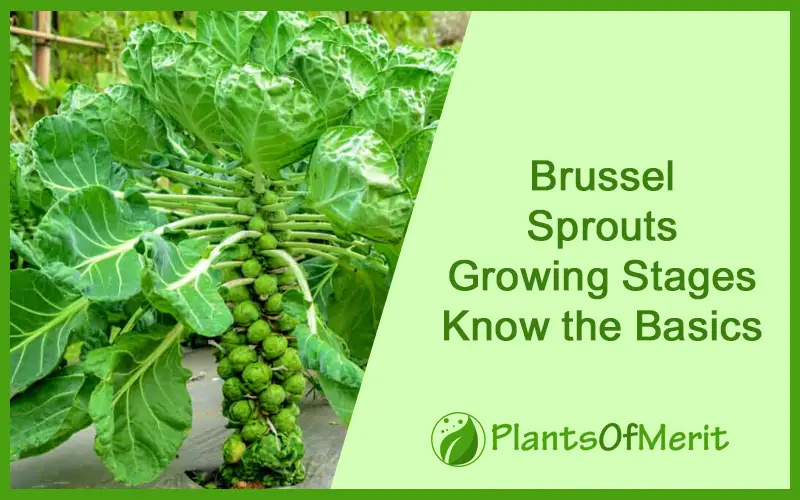Certain vegetables in the world are a hit or miss among people. Some love it and can eat it for every meal; some despise it to the point of no return. Brussel Sprouts are one of those vegetables. Named after the city of Brussels in Belgium, Brussel Sprouts have been around for centuries now.
With social media and video platforms becoming more mainstream, people are now taking a liking to this vegetable. But, there’s one thing cooking this vegetable and it’s a completely different thing growing it in your garden.
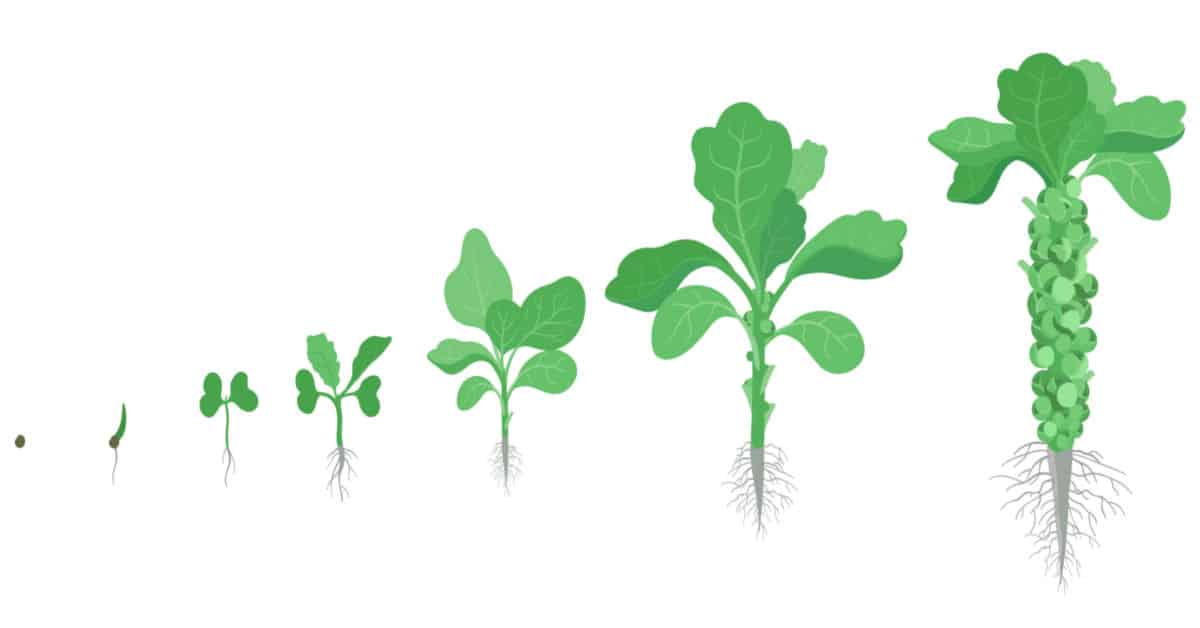
If you are highly enthusiastic about the same and want to grow Brussel sprouts from scratch in your backyard, be assured that the process won’t be as simple as you think. A lot similar to the cabbage family, Brussel sprouts look like mini cabbages, making them a very fun vegetable to grow and have on your plate.
Since Brussel sprouts are slow-growing biennials, they require a prolonged growing period. This means that you’d have to be patient throughout the process. This article will walk you through all the details you need to know about growing Brussels sprouts in your backyard.
What are the Brussel Sprouts growing Stages?
Growing Brussel sprouts will test your patience, no questions asked. This means that you have to be mindful of a lot of things; including the time it takes for you to grow the plant from scratch.
Typically, the plant can take around 80-100 days for the entire growing season, so you need to be mindful of the same before going into the process. Also, the most effective harvesting season for Brussel sprouts is during the winter season.
Brussel sprouts typically have four growing stages, so let us get that sorted out:
Stage 1 – Planting
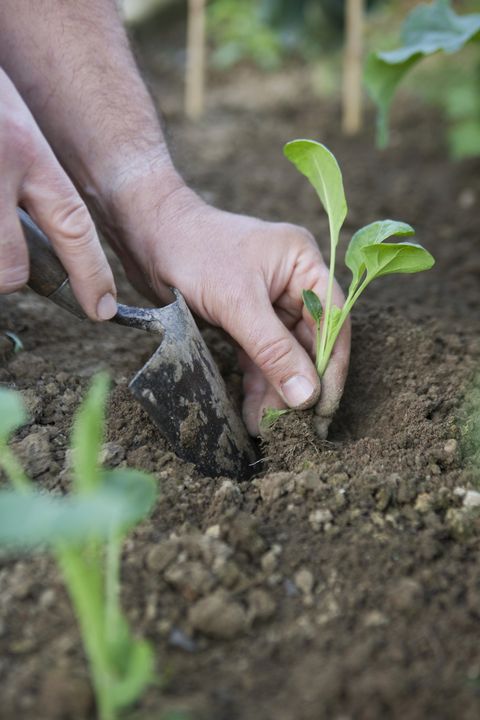
As with any plant, even with your Brussels sprouts, you need to plant them at the right time and with the right environmental factors to ensure optimal growth of the buds and sprouts.
There are two options when it comes to planting Brussel sprouts. You can start the planting indoors or you can directly plant it outdoors, directly into the ground. However, when it comes to planting, timing is key.
Since Brussel sprouts have a long growing season, it isn’t surprising that you need to plant the Brussel sprouts around three months before the first frost date. If you are confused about the ideal time of planting, we’d recommend checking the weather in your vicinity before planning things.
Additionally, when planting the Brussels sprout plant, you need to be mindful of the surrounding area too. You want to ensure that the planting is happening where there is direct sunlight exposure. Also, you need well-drained soil, so that’s another thing you have to be mindful of.
If you end up planting it in a shady area, it might not stop the growth of the plant but it will most definitely stunt the growth quite drastically. It will also slow down the growth of the plant, so that’s another downside you have to be mindful of.
The correct parameters during the planting support quicker seed germination. The temperature should be between 45-to-85-degree Fahrenheit. With all the right factors, the seedlings should germinate within 5-8 days.
Stage 2 – Early Growth
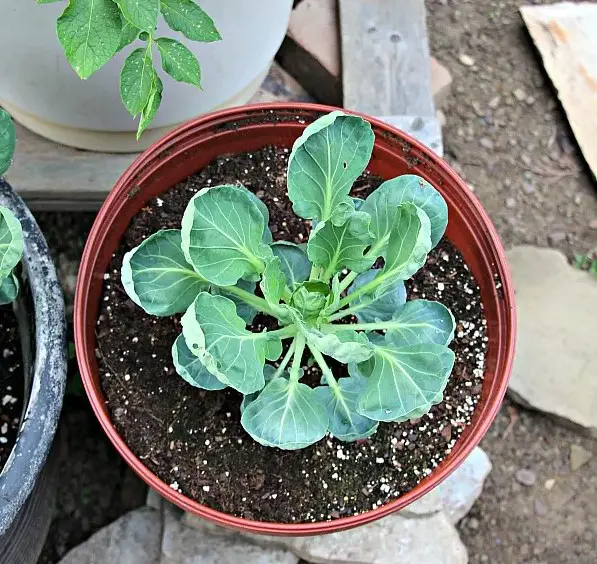
The second stage of growing Brussels sprouts is early growth. This is the stage where you have to pay close attention. If you leave things idle during this period, be assured that it will affect the growth drastically, which is potentially the last thing you want.
As the plant keeps growing and reaches around 4-5 inches in length, pull everything but the healthiest young plants in the soil. Let the rest grow and enable them to grow up to 10-24 inches along with the stem.
Since the plant is still in a very sensitive stage of growth, you want to ensure it is getting all the basic growing parameters it needs and that includes the moisture in the soil. For optimal results, sprinkle the surrounding of the plant with mulch to ensure that the soil is well-draining but also retains necessary moisture at the same time.
The further you progress in this process, you will notice the Brussel sprout plant forming small cabbage-like leaves on the top. Wait until the plant reaches 12 inches in height and this should take around 2-4 weeks following the initial planting.
During this period, the plant also requires a fertilizer boost, so opt for organic fertilizer or an ammonium nitrate product for optimal results for the plant without any compromise.
Stage 3 – Sprout Formation
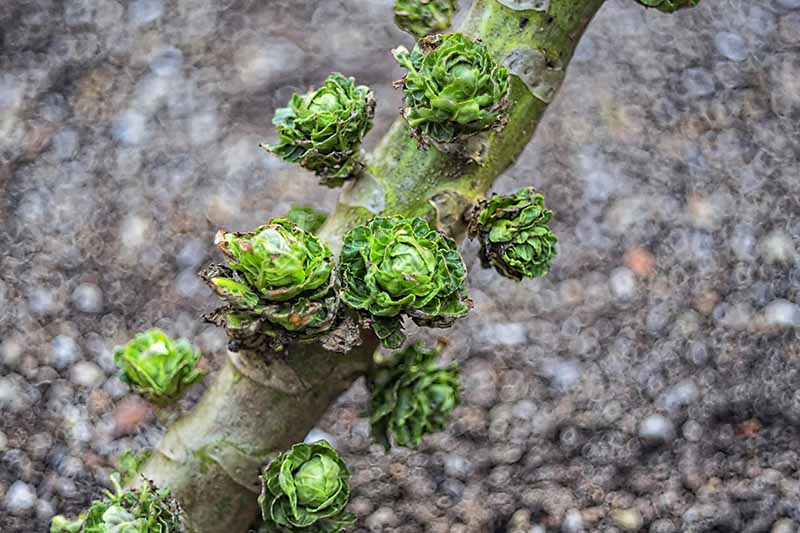
This is the stage where you will start noticing your hard work come to life. Brussel sprouts take around 50 days following planting to grow and sprout. As you know, they grow as small cabbages and grow at the spot where each of the leaves join the stalk.
The first sprout of the plant grows towards the base and then grows upwards towards the trunk, so keep that in mind, when you are recording the progress of your Brussel sprout plant. If you want to expedite the growing process, you need to remove the top growing peak until the plant grows around 10-12 inches in length.
Eliminating the extra foliage from the plant helps with the growth and even supports optimal absorption of the nutrients from the plant. When you cut out the extra foliage, it helps the plant maximize its resources for optimal growth.
As the plant keeps growing, you need to be consistent with the pruning and sheering of the extra foliage. You can eliminate the lower leaves to ensure that the sprouts don’t overcrowd at the top where the sprouts are supposed to come out of.
Since the sprouting process is quite swift, don’t be surprised if it doesn’t take you long to reach the harvesting stage. Just wait until the Brussel sprouts are the size of a marble to harvest them if you want. You can let them grow a little bit more for more meat in the vegetable.
Stage 4 – Harvesting

The last stage in growing Brussel sprouts is harvesting. After a lot of hard work, you are finally ready to harvest the Brussel sprouts and eat them to your heart’s desire.
Depending on the type of Brussel sprouts you are growing, it can take somewhere between 90-100 days for the vegetable to be ready to be harvested. Typically, the sprout is around 1-2 inches in diameter, when you know they are ready to be harvested.
You aim to ensure that the plant has bright green colored leaves that look fresh. Avoid eating the ones that seem to have brown edges or dry on the exterior.
Also, when harvesting, you want to harvest it from the bottom first and then make your way toward the top of the plant. This is because the ones in the bottom mature quicker than the ones towards the tip of the stem.
Furthermore, if you notice the Brussel sprout leaves turning yellow, it is a sign that the one isn’t suitable for eating. Harvest and discard it. You also want to harvest it before frost because that’s when things take a turn for the worse.
These are all the growing stages of Brussel sprouts you have to be mindful of when it comes to growing this plant. Things can seem a little unpredictable and hectic. However, with the right techniques, you should be good.
How to Care for Brussel Sprout Plants?
Now that you are all sorted with the different growing stages of Brussels sprouts, the next thing we have to look out for is caring for the plant.
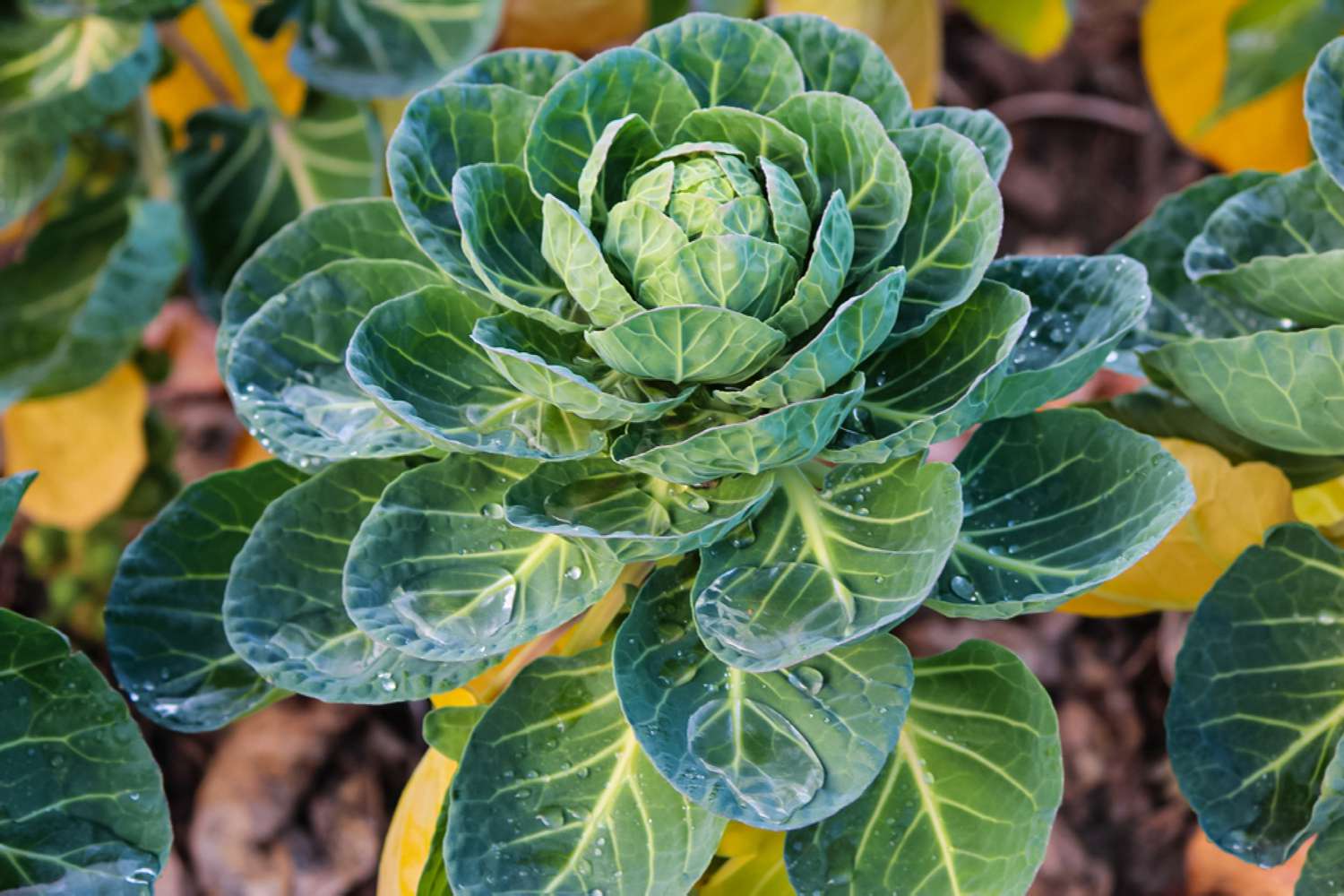
The plant is a little high maintenance, so you might have to go out of your way to maintain all the optimal parameters to ensure that the plant grows without any inhibition.
Following are all the factors you have to be mindful of:
1. Light
Brussel sprout plants need direct sunlight, so that’s something you can compromise. You need to plant them in areas in the garden that receives direct sunlight throughout the day. Partial sunlight or entirely shady areas impose a lot of complications, especially when it comes to the growth of the plant.
When it comes to sunlight exposure, a Brussel sprouts plant needs a minimum of 6 hours of sunlight without any complaints. Excess shade exposure will dampen the plant’s maturity, so that’s something you have to be mindful of.
2. Soil
Another important factor that you need to be mindful of when it comes to caring for Brussel sprout plants is the soil. You need well-draining soil that will prevent waterlogging. That’s the most important factor you can’t miss out on when it comes to growing Brussel sprouts.
Loamy soil makes the perfect base and when mixed with a layer of compost, it makes the perfect growing soil for Brussel sprout plants.
Additionally, you also have to be mindful of the soil’s pH. You need to keep it neutral to ensure optimal growth of the plant without any inhibition.
3. Water
Coming to the moisture levels and watering, this is another factor you can’t miss out on. You aim to keep the soil moist but at the same time, you don’t want it to turn soggy.
If you are a beginner and want a more specific water measurement for the soil, 1 to 1.5 inches of water every week works optimally. It is not just sufficient; it also makes for the perfect growing parameter without any compromise.
The best way to retain moisture in the soil throughout the week is by sprinkling a layer of mulch around the plant. Not only does it retain moisture, but it also keeps the soil cool, which is another benefit.
4. Temperature and humidity
Another important parameter you need to be mindful of when it comes to growing Brussel sprouts is the temperature and humidity.
The ideal temperature for growing Brussel sprouts is between 45- and 80 degrees Fahrenheit. Also, the plant doesn’t sustain colder temperatures or frost, so that’s another factor you have to be mindful of.
Humidity isn’t a major factor when it comes to growing Brussel sprouts, so that’s something you can rest easy with. The only thing you have to be mindful of is ensuring that the other parameters are met.
5. Fertilizer and nutrients
Like any other plant, even Brussel sprouts need a good dose of nutrients and fertilization throughout their growing period.
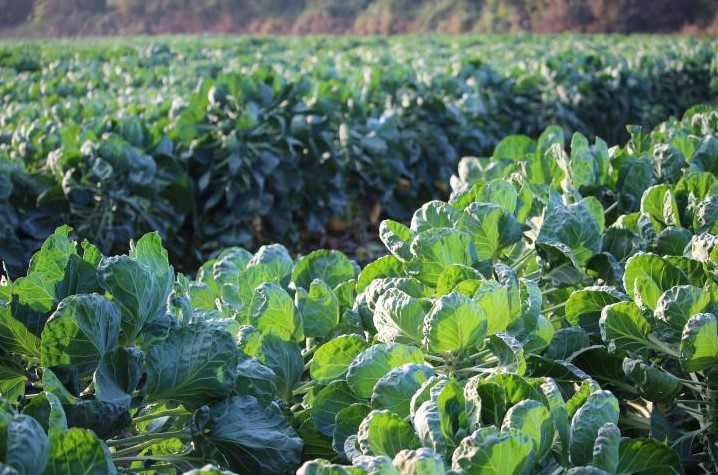
You want to stick to using organic fertilizer (especially vegetable waste) since you will eventually end up eating the Brussel sprouts. Doing so ensures that you aren’t exposed to the harsh chemicals that are otherwise quite prevalent in fertilizers.
Reapplying the fertilizer a few times throughout the growing season is normal. But, you don’t want to overdo things at all.
6. Pollination
Possibly the last and one of the most underrated caring tips is pollination. The flowering and seeding process happens during the second growing season.
So, if you want to continue growing the Brussel sprouts, you can wait until the second season of growth for the pollination to happen. Insects and wind should get the job done, which means that you won’t have to worry about doing things manually.
Taking care of the Brussel sprout plant throughout the growing stages make all the difference, especially until it’s ready to be harvested. So, if you are a newbie with very little knowledge about growing Brussel sprouts, we’d recommend that you follow all the tips that we have sorted out in this article for you in detail.
Conclusion
And, with that, we come to the end of this article. If you started this article with no knowledge about growing Brussel sprouts, we hope this article changes all of that for you. The only thing we’d recommend you focus on is keeping a check on all the growing parameters. Doing so ensures that you get the best harvest by the end of the 3 months, making all your hard work worth it.

